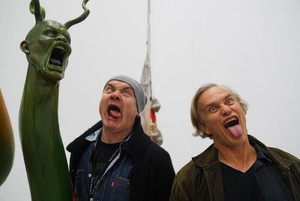
Truth Revealed: Damien Hirst and James Fox on Ashley Bickerton
In conversation with James Fox, Damien Hirst reflects on the artwork of his longtime friend.
July 4, 2020
Damien Hirst speaks about his Veil paintings with Gagosian’s Alison McDonald. “I wanted to make paintings that were a celebration,” he says, “and that revealed something and obscured something at the same time.” Accompanying their conversation is a video of Hirst at work in his London studio, providing an inside look at the process behind these immersive abstractions.
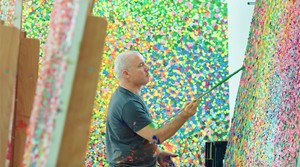
Damien Hirst working on Veil paintings in his London studio, 2017
Damien Hirst working on Veil paintings in his London studio, 2017
Alison McDonald How did the Veils series begin?
Damien Hirst I fell into painting on my own after my friend Angus Fairhurst died, in 2008, but it was dark and solitary. With the Veils, I started where I had left off with the Visual Candy paintings in the early 1990s. I realized that I had made paintings with this sense of celebration, but not at the right scale. I guess I had a kind of fear of abstract painting at the time because I was focusing on Minimalism. The Visual Candy paintings were a great idea but very small. I was making big Spot paintings, but for some reason I didn’t make the right leap of scale with these works until just before my Gagosian show in LA in 2018. I painted them all just before my big Treasures show in Venice [Treasures from the Wreck of the Unbelievable: Damien Hirst]. The whole series took around two years to complete.
AMcd You seem to be comfortable working on many canvases at once. Is that fair to say?
DH I imagined this whole series in one go and worked it out in advance. I don’t think it matters how many paintings you make in a series, as long as you’re clear. In the beginning of my career, I was looking a lot at artists like On Kawara, and I loved the idea of an infinite series. But it isn’t like that for me anymore; there are ninety-four paintings in this series and a series of works on paper, and there won’t be any more. And I painted them all together, as they all inform each other. I immersed myself in the paintings. And then ended the series.

Damien Hirst, Veil of Logic, 2017, oil on canvas, 66 × 45 inches (167.6 × 114.3 cm)
AMcd What preparations happened on the canvas, or with the paint and brushes and so on, before you started painting?
DH The first thing I did was paint all the canvases different colors. I have a selection of colors I love and use over and over again. They are like sweet shop colors and the colors of fruit and flowers; they are my go-to colors. I mixed them myself and I started with those. I used a longer-than-normal brush—not Matisse-style, but a bristle brush about two or two and a half feet long—just long enough to get a bit more distance from the painting surface and not be awkward. I wanted to make paintings that were a celebration and that revealed something and obscured something at the same time.
Damien Hirst working on Veil paintings in his London studio, 2017
AMcd Were there any specific paintings or painters you were thinking about when you embarked on this body of work?
DH Apart from the obvious painters like Georges Seurat and Pierre Bonnard, I thought a lot about Willem de Kooning and Chaïm Soutine, even Francisco de Goya in his marks. But even though they are abstract paintings, I never get far away from Op painters like Larry Poons or Bridget Riley, and Yayoi Kusama. These paintings felt totally new and right to me, even with all the historical stuff going on. I think maybe in the early ’90s I was right to hold back, because this type of painting was negative and retro and kind of would have got in the way of my romance with Minimalism at the time and my love of Sol LeWitt, with his exploration of the cube and boxes.

Damien Hirst with Veil of Hidden Meaning (2017–18), London, 2020
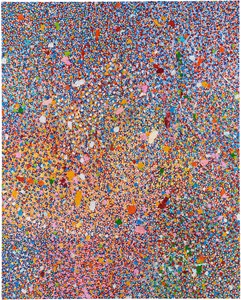
Damien Hirst, Veil of Hidden Meaning, 2017–18, oil on canvas, 120 × 96 inches (305 × 244 cm)
AMcd You have always worked in series. Is this connected to the way you work through your ideas?
DH I like series because they define you. I have so many conflicting ideas, and a series is great way to jump in and out of something. Also, they are a battle with the idea of death. The infinite series I made at the beginning of my career was a way for me to not face that. It’s a great way to imagine that you will last forever—even though you won’t. Now that I’m older the series are getting smaller, and that feels more realistic and wiser, maybe even more mature, although I hate to say that. I think with this series I made the right number of paintings for how I was feeling and then moved on, and maybe in my Spot paintings I was hiding from my own mortality.
AMcd Do you find that the music you listen to in the studio impacts your paintings?
DH With the Veil paintings I found that listening to music gave me more focus. It felt like each painting was worked out even before I began, and that once I started it was just a process of bringing them all into the world how I imagined them.
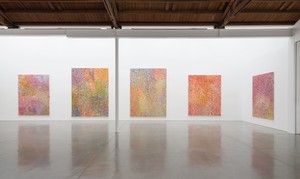
Installation view, Damien Hirst: The Veil Paintings, Gagosian, Beverly Hills, March 1–April 14, 2018
AMcd What connections do you see between the Spots, the Visual Candy paintings, the Colour Space works, and the Veils? Are these all part of the same lineage for you? Or are you after different things?
DH It’s an obvious set of steps for me to get from my Visual Candy paintings through the Spot paintings and Colour Space paintings to the Veil paintings, but I don’t think I could have done it in one leap. The Visual Candy paintings were me getting my love of the New York School painters out of my system; they were kind of like the detritus from the Spot paintings, because my heart felt like I was into ’50s gestural painting at the time, and my head was in Minimalism and the consumer world. I was trying desperately to move into the present because I could see it and feel it, but I wasn’t there. I was soaking up the works of Tony Cragg, Meyer Vaisman, Ashley Bickerton, Jeff Koons, Sherrie Levine. I suppose I was a bit embarrassed that I had this love of de Kooning when it was all Dan Flavin, Donald Judd, and Carl Andre. Then years later, when I made the catalogue raisonné of my Spot paintings, I saw the first Spot paintings I had made, with the drips, and I thought, Fuck, they were good! And so I made a new series like those, called the Colour Space paintings, and that gave me the confidence and freedom to let loose and get lost and really celebrate all those years and moments in my Veil paintings.
Damien Hirst: The Veil Paintings, Gagosian, Beverly Hills, March 1–April 14, 2018
Artwork © Damien Hirst and Science Ltd. All rights reserved, DACS 2020

Since emerging onto the international art scene in the late 1980s, Damien Hirst has created installations, sculptures, paintings, and drawings that examine the complex relationships between art and beauty, religion and science, and life and death. His work traces the uncertainties that lie at the heart of human experience. Photo: Prudence Cuming Associates
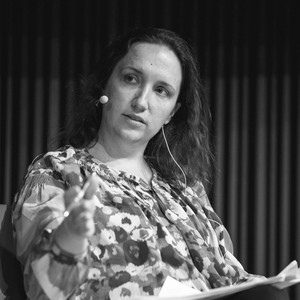
Alison McDonald is the Chief Creative Officer at Gagosian and has overseen marketing and publications at the gallery since 2002. During her tenure she has worked closely with Larry Gagosian to shape every aspect of the gallery’s extensive publishing program and has personally overseen more than five hundred books dedicated to the gallery’s artists. In 2020, McDonald was included in the Observer’s Arts Power 50.

In conversation with James Fox, Damien Hirst reflects on the artwork of his longtime friend.

The Fall 2021 issue of Gagosian Quarterly is now available, featuring Damien Hirst’s Reclining Woman (2011) on its cover.
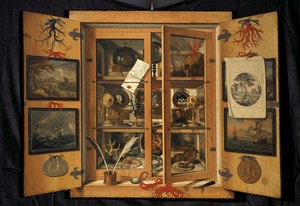
Sydney Stutterheim meditates on the power and possibilities of small-format artworks throughout time.
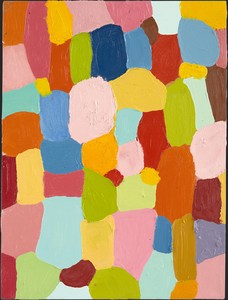
James Fox considers the origins of Damien Hirst’s Visual Candy paintings on the occasion of a recent exhibition of these early works in Hong Kong.
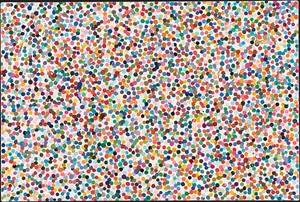
Blake Gopnik examines the artist’s “dot” paintings in relation to the history of representation in Western art, in which dabs of paint have served as fundamental units of depiction and markers of objective truth.
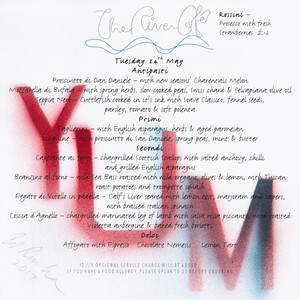
London’s River Café, a culinary mecca perched on a bend in the River Thames, celebrated its thirtieth anniversary in 2018. To celebrate this milestone and the publication of her cookbook River Café London, cofounder Ruth Rogers sat down with Derek Blasberg to discuss the famed restaurant’s allure.
Jenny Saville reveals the process behind her new self-portrait, painted in response to Rembrandt’s masterpiece Self-Portrait with Two Circles.

Art for a Safe and Healthy California is a benefit exhibition and auction jointly presented by Jane Fonda, Gagosian, and Christie’s to support the Campaign for a Safe and Healthy California. Here, Fonda speaks with Gagosian Quarterly’s Gillian Jakab about bridging culture and activism, the stakes and goals of the campaign, and the artworks featured in the exhibition.
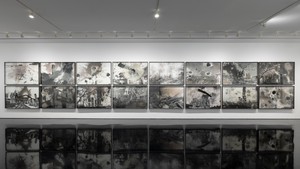
Sébastien Delot is director of conservation and collections at the Musée national Picasso–Paris and the organizer of the first retrospective to focus on Anselm Kiefer’s use of photography, which was held at Lille Métropole Musée d’art moderne, d’art contemporain et d’art brut (Musée LaM) in Villeneuve-d’Ascq, France. He recently sat down with Gagosian director of photography Joshua Chuang to discuss the exhibition Anselm Kiefer: Punctum at Gagosian, New York. Their conversation touched on Kiefer’s exploration of photography’s materials, processes, and expressive potentials, and on the alchemy of his art.
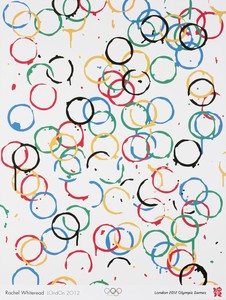
The Olympic and Paralympic Games arrive in Paris on July 26. Ahead of this momentous occasion, Yasmin Meichtry, associate director at the Olympic Foundation for Culture and Heritage, Lausanne, Switzerland, meets with Gagosian senior director Serena Cattaneo Adorno to discuss the Olympic Games’ long engagement with artists and culture, including the Olympic Museum, commissions, and the collaborative two-part exhibition, The Art of the Olympics, being staged this summer at Gagosian, Paris.

On the occasion of Art Basel 2024, creative agency Villa Nomad joins forces with Ghetto Gastro, the Bronx-born culinary collective by Jon Gray, Pierre Serrao, and Lester Walker, to stage the interdisciplinary pop-up BRONX BODEGA Basel. The initiative brings together food, art, design, and a series of live events at the Novartis Campus, Basel, during the course of the fair. Here, Jon Gray from Ghetto Gastro and Sarah Quan from Villa Nomad tell the Quarterly’s Wyatt Allgeier about the project.
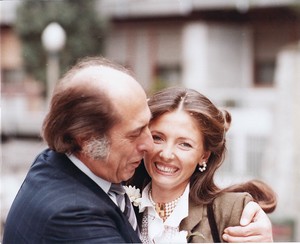
In 2023, the collector and patron of the arts Gemma De Angelis Testa donated over 100 artworks from her collection to the Ca’ Pesaro Galleria Internazionale d’Arte Moderna in Venice. On the heels of that exhibition, she met with Gagosian senior director Pepi Marchetti Franchi to discuss the genesis of her collection, the key role of her organization ACACIA (Friends of Italian contemporary art association) in enriching the world of contemporary Italian art, and what it means to share one’s collection with the public.